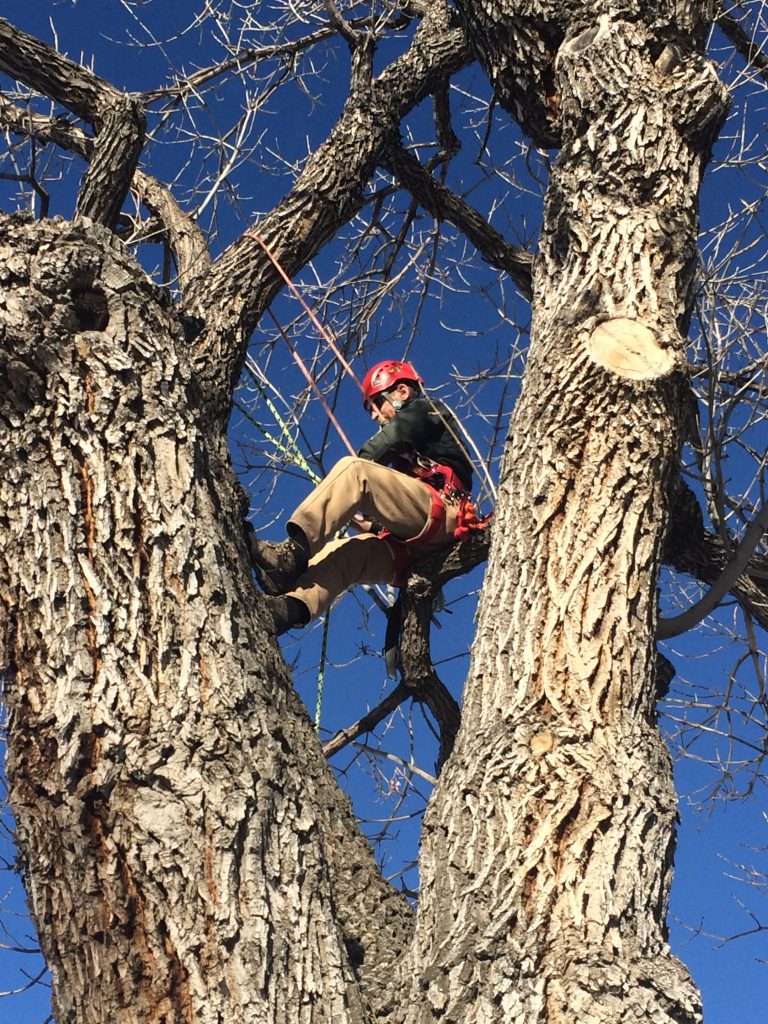When we tell people what we do for a living, the two most frequent responses we hear are, “Wow that must be so exciting,” and “It must be great to work outside everyday.” We have to admit, our jobs on the urban forestry team are not boring.
Chainsaws and Chippers
Yes, we are in an exciting, yet challenging profession. The urban forestry crew provides all aspects of tree care to the department’s urban parks and trail systems. Working in a bucket truck, wielding a chainsaw, and feeding wood through a limb chipper certainly keeps us busy. However, as with most jobs, there can be times when work becomes monotonous, so we constantly look for ways to improve our performance and maintain a safe work environment while challenging ourselves to broaden our knowledge and experience.
Recently we learned a new technique called “rigging,” which is the use of ropes and equipment to take down trees or remove heavy limbs. Rigging allows us to safely remove large branches, maintain control of the descent speed and direction, all while avoiding ground obstacles.
The basic components of a rigging system include high tensile strength rope, pulleys and blocks, slings, and friction devices. The block or pulley is attached to a strong anchor point in the tree, usually a tree branch junction.
A rope is run through the pulley and attached to the limb that is to be cut. The ground worker attaches the end of the rope to a stationary object on the ground through a friction device, allowing the descent to be controlled while managing the heavy load. The limb is then cut below the rope attachment point and the ground worker lowers it to the designated landing zone.
Keeping It In-house
Learning how to implement the rigging technique will enable the urban forestry team to accomplish more work in-house rather than hiring a licensed contractor. We will be able to challenge ourselves while problem solving how to rig each situation, tree and branch. With our new skills, we will be able to flex our mental and physical muscles, using brain and brawn.

